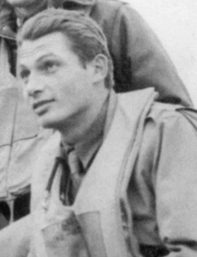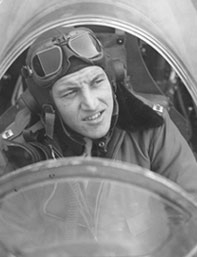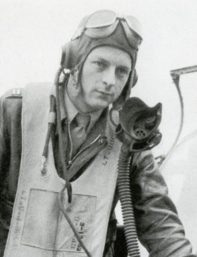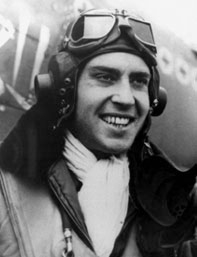The Birth of the Fighting Cobras
By 1st Lt. Albert J. Feigen and 1st Lt. Charles F. Kennaw
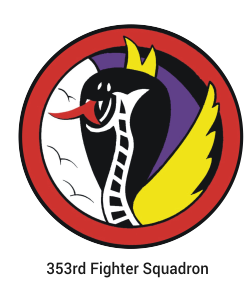
The 353rd Fighter Squadron was activated at Hamilton Field, California, November 15, 1942. The First Commanding Officer was Major Owen M. Seaman. By December 7, 1942, the squadron had reached a total strength of 3 officers and 29 enlisted men, among whom were 1st, Lt. William M. Schubert and 2nd Lt. B.M. Thompson, the latter being assigned as squadron adjutant. Corporal Charles W. Decker was selected to be acting First Sergeant and the squadron was getting under way.
Almost daily groups of enlisted men were received in the squadron, with the principal sources of personnel being Hammer Field, California and Paine Field, Washington. Organization Day as decided by a meeting of the squadron staff personnel, was set for December 7, 1943 and at the same date for each year following as long as the squadron was in activation.
Seven officers and 189 enlisted men entrained at Hamilton Field on January 18, 1943 for Bombing and Gunnery School at Tonopah, Nevada. During this time 2nd Lts. Don M. Beerbower, Jack T. Bradley, James Cannon and John Montijo, all flying officers, joined the squadron. Lt. Bradley was appointed Operations Officer, and the rest as Flight Leaders. The squadron passed through its training period with a remarkably low accident rate for which achievement they received a letter of commendation. One incident of note occurred on May 30, 1943 while the squadron was participating in gunnery practice, 1st Lt. D. M. Schultz found it necessary to bail out of his ship. The parachuting pilot landed atop the hospital which was to be his home for several weeks. Accounts of his unique experience appeared in magazines "Time" and "Newsweek," and later in the famous Ripley "Believe-it-Or-Not" column.
353rd Fighter Squadron Roster Board, "Ready to ship out to Europe". Portland, Oregon 1943. (Janice Bradley Garrett)
Place your mouse over the image below and use the mouse wheel to zoom in and out.

Into Combat
The squadron left the staging area at Camp Kilmer on October 20, 1943 at full strength. It is possible that those who arranged for the transportation placed them on the right ship. Embarkation, however, was SNAFU in every respect. Landing in England, the squadron finally found its dubious way to Boxted, the pilots having previously checked out in P-51s. Here much sweat and tears altered the face of the base. Areas were cleaned up, fences erected, parking areas designated and roads cleared of inches of mud.
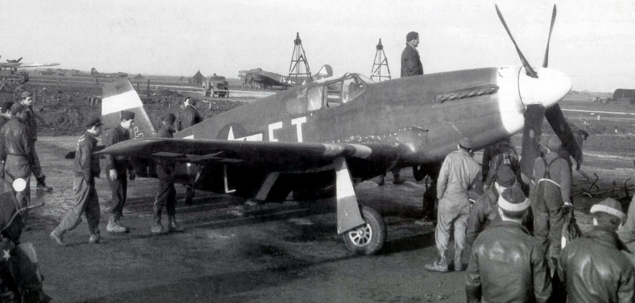
A P-51B Mustang from the 353rd FS visits a bomber base for the sole purpose of its crews to get familiarize with their new escort fighter. White bands were applied to all escorting fighters for increase recognition by friendly forces. During the course of the war groups devised unique paint schemes for identification. (National Archives)
One morning, without display, the squadron sent out its first combat mission. Our squadron was led by Major Owen M. Seaman with Lts. Jack T. Bradley, Don M. Beerbower, Wallace N. Emmer, Buford M. Eaves and James W. Kerley. The date was December 1, 1943. This group mission was led by Lt. Colonel Donald M. Blakeslee and marked the first use of Mustangs by the USAAF Units in the ETO.
On March 4, Mustangs flew over Berlin and two days later went back again, demonstrating the greater range and future possibilities of the P-51.
A "First" was recorded in this squadron when 1st. Lt. Glenn T. Eagleston attacked an ME 110, killing the rear gunner and knocking out the right engine thereby earning the squadron's and the group's first claim as a probable. Another "First" for Lt. Eagleston was recorded when he was the first pilot to "hit the silk." His oil line had been shot away and he nursed his plane back over the channel as far as England where he was forced to leave his ship.
On December 20, 1943, Major Owen M. Seaman, the squadron C.O., was lost in the North Sea and was replaced by Captain Robert L. Priser, transferred from the 355th Fighter Squadron. He was in turn succeeded by Captain Jack T. Bradley, who assumed command of the squadron after Captain Priser was lost in combat over the Brussels area.
Long planned, long expected, long awaited, a squadron party took place on February 15, 1944, at Colchester's Red Lion Inn. With beer for the thirsty and food for the hungry, with an orchestra for the athletic and informality for the greater success of the affair, all present believed the party worth waiting for. Early in the evening no women were to be found (plans for escorting WACS, ATS and civilian girls having gone awry) and the pilots offered each of the first ten men to procure women a bottle of Scotch. Ten prizes were awarded in a matter of minutes. Ten men looked at their partners, then at the bottles-and decided that, after all the Scotch was worth it.
On February 21, 1944, 2nd Lt. Don McDowell emerged as the second Mustang Pilot in this theater to claim three enemy aircraft in one day, his claim being two ME-109s and one ME-110 destroyed. Briefly scanning the totals for the month of February, the squadron participated in 13 missions, claimed 29 enemy aircraft destroyed, 1 probably and 16 damaged besides numerous ground targets with the loss of five pilots.
On March 4, Mustangs flew over Berlin and two days later went back again, demonstrating the greater range and future possibilities of the P-51. Later the same month we added another first to our list when the squadron carried 500-pound bombs on a dive-bombing mission. Moving to Lashenden, Kent, the fighter did less escort work and carried bombs more and more.


